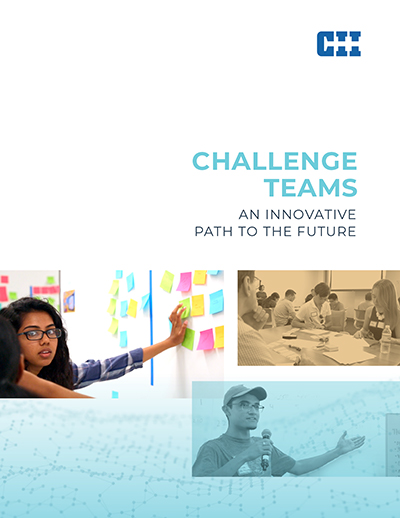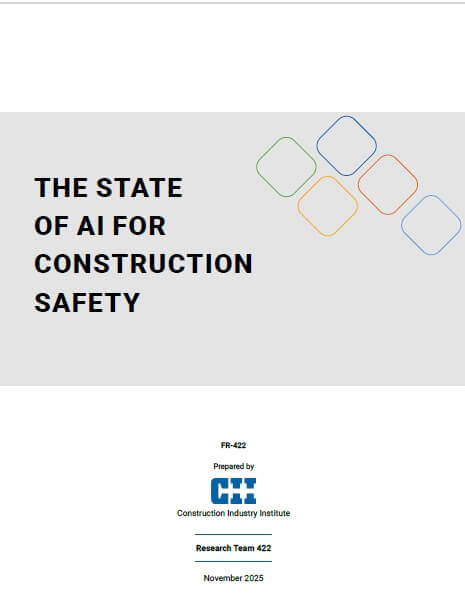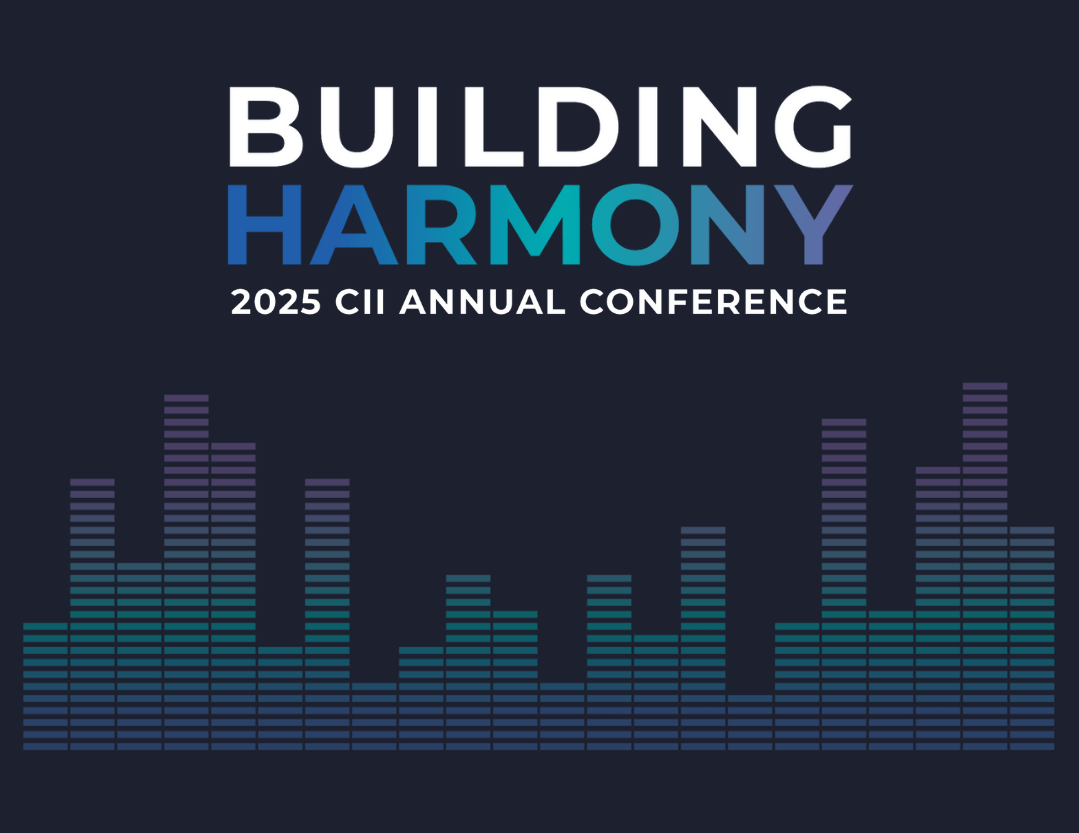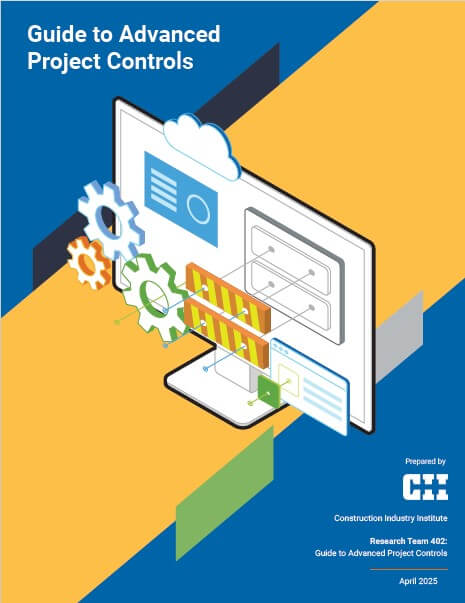
Challenge Teams: An Innovative Path to the Future
Can we imagine the future of capital projects delivery? What will a project look like in 2050 – 30 years from today, when an entire new generation of professionals will lead our industry, and new technologies and processes that we cannot image today are in place? CII’s Technology Committee designed the “Technology Path to the Future” initiative to answer these questions and to inspire a technological step-change in the capital projects industry, and it created Research Team TC-04 (RT-TC-04) to make these things happen.
CII’s charge to the team was ambitious: envision the future of the capital projects industry with a vigor that challenges that industry to think boldly. To this end, RT-TC-04 carried out a series of innovation workshops and brainstorming sessions with next-gen rising stars and established industry leaders. This report is a compilation of all of these efforts – ideas from the Mars Industries workshops, 12 technology enablers, and Challenge Teams’ vision for the future – and is the team’s Technology Path to the Future.
In this report, RT-TC-04 presents the Challenge Teams Program, which it developed in two phases:
- Divergent Phase – During divergence, the team tapped into the wisdom and diversity of the crowd. It carefully designed two innovation workshops that targeted participants who were unencumbered by past experience in the capital projects industry. The workshops overcame two central cruxes of transdisciplinary crowdsourcing:
- Ensuring participation.
- Ensuring coordinated focus, in this case on capital projects innovation.
- Convergent Phase – During convergence, RT-TC-04 aggregated the collected information and synthesized it into a Viable Paths Framework in consultation with the Technology Committee. The team used the Viable Paths Framework to generate ambitious objectives and chart viable paths to their achievement.
Each Innovation Sprint involved a short time commitment and required no travel or capital expenditure. During a Sprint, the host set up a temporary innovation environment where a challenge team could immerse itself in an intense innovation activity guided by the Viable Paths Framework. The deliverable of each Sprint was a slide document consistent with the Viable Paths Framework.
The team performed a trail run of the program, assembling five challenge teams and conducting five Innovation Sprints. The results demonstrated a substantial departure from the incrementalism that typically surrounds innovation in the capital projects industry. Ultimately, this research demonstrated that experienced practitioners are not only capable of radical innovation – they actually enjoy thinking in this way. Finally, RT-TC-04 issued a vision board that summarizes and celebrates the innovative ideas it gathered through the initial Challenge Teams Program.
RT-TC-04 designed and iterated a brainstorming workshop to motivate participation without offering compensation. Through this process, the team identified principles for thoughtful innovation that answer the following questions (FR-TC-04):
- Why does a company need to adopt new technology? (Section 2.1, Growth, on p. 3)
- How do we find the innovators in a company? (Section 2.2.2, Thoughtful Innovation, on p. 6)
- How can we instill a feeling of urgency in our change initiatives? (Section 2.2.2 subsection, Compelling Drivers of Change, also on p. 6; Section 3, Divergent Thinking: Mars Industries, on p. 10)
- What does it mean to think from first principles and why is it important? (Section 2.2.2 subsection, A New Perspective, on p. 7)
RT-TC-04 discovered that the quality of ideas shared during brainstorming workshops improved with imposition of a stringent framework (FR-TC-04, Section 3.1.2, Iteration Two, on p. 14). To help the challenge teams pursue their innovation activities, the team provided a “Viable Paths Framework” (Section 4.5, The Viable Paths Framework, on p. 24).
The team parsed the more than 1,500 individual innovation ideas it collected from the brainstorming workshops, distilling them into 12 fundamental productivity and efficiency enablers (FR-TC-04, Section 4.3, Technology Enablers, on p. 22):
- Transparency and Trust
- Fast and Reliable Payments
- Equipment and Facility Modularization
- Component Standardization
- Information Systems Interoperability
- User Interfaces
- Forecasting and Simulation Fidelity
- Detailed Engineering and Planning
- Sensors and State Awareness
- Automation
- Workforce and Community Wellness
- Environmental Sustainability
RT-TC-04 performed a trial run of the CII Challenge Teams Program in its entirety by using five challenge teams. Each challenge team focused on a unique challenge in the capital projects industry, developed its own vision for the future, and contributed to a total of 78 slides of brainstormed material. RT-TC-04 combined many of these ideas into a vision board that depicts a truly bold and exciting picture of what our industry could look like in 30 years (FR-TC-04, Section 5.2, Challenges Teams Vision Board; Figure 11).



